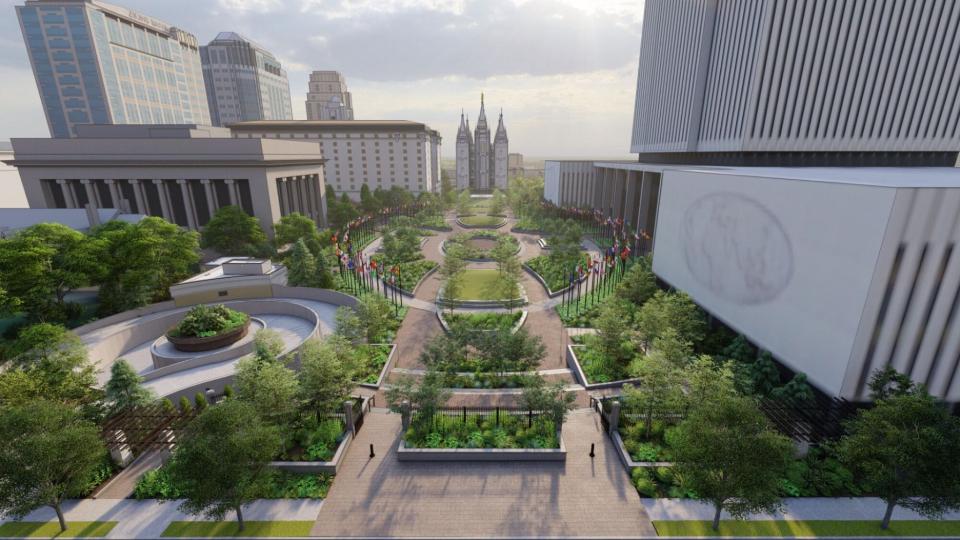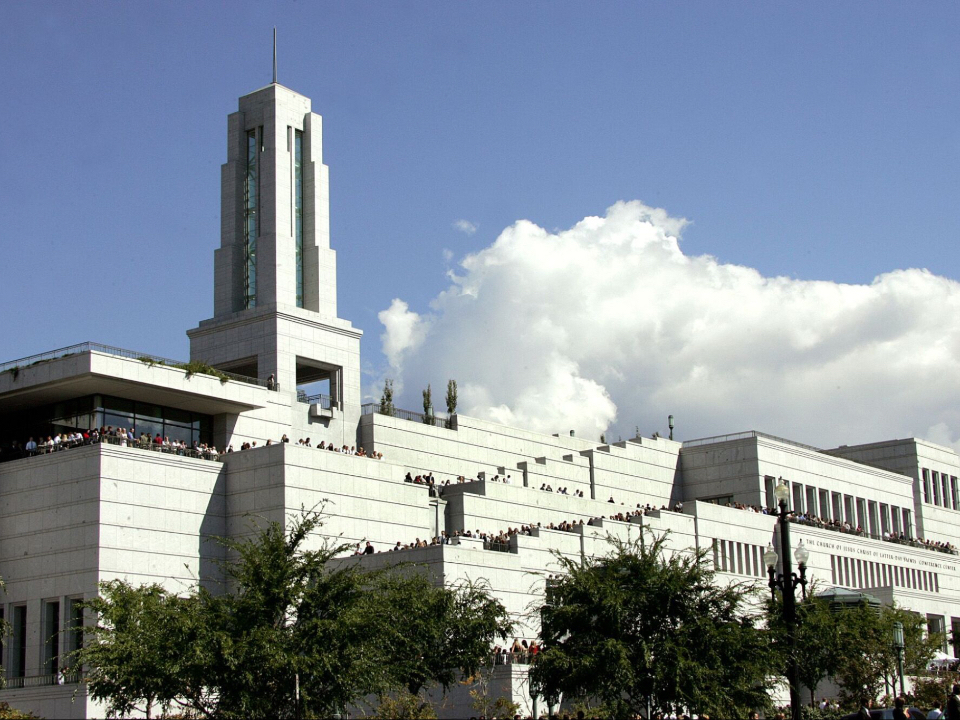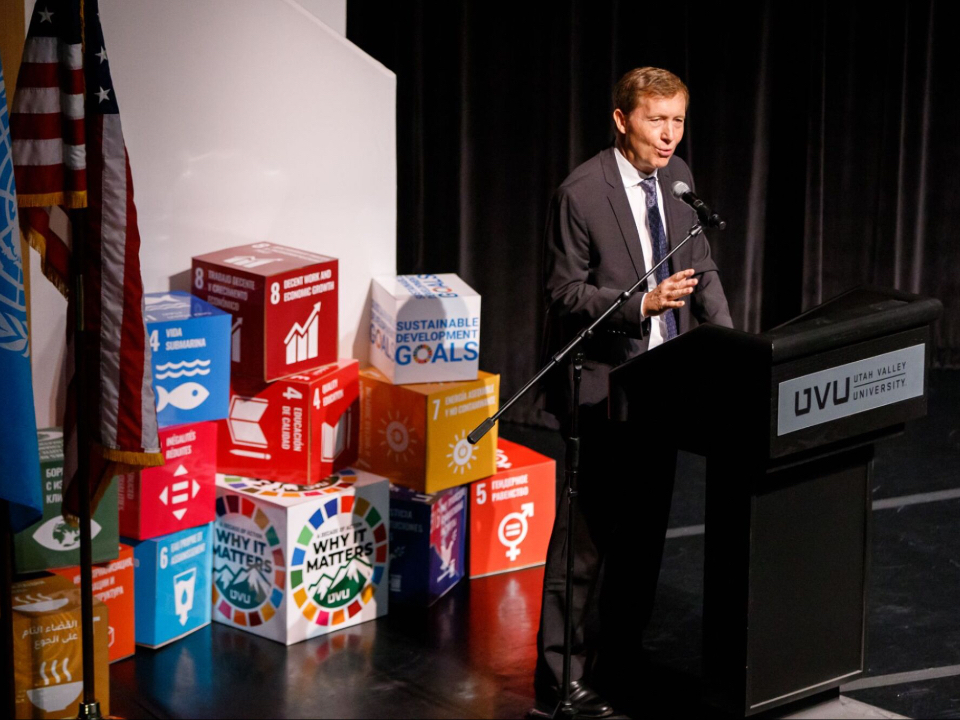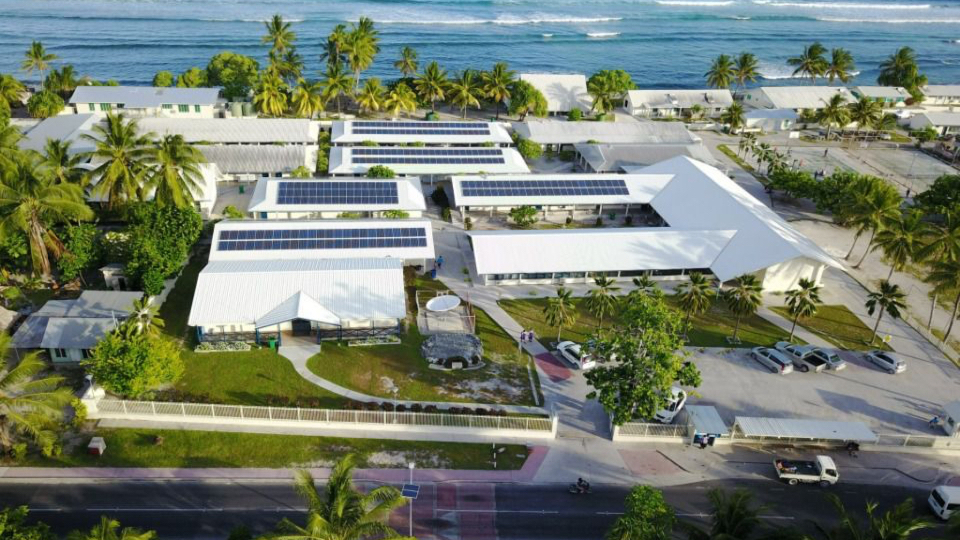
1-Earth-Day-2023
West-facing rendering of the new Church Office Building plaza. The new grounds will feature more perennials, less grass and 30% more trees. Turf grass is being reduced by 35% and annuals by 50%. All turf grass will receive 35%-40% less water from June to September. All rights reserved.
This story appears here courtesy of TheChurchNews.com. It is not for use by other media.
By Kaitlyn Bancroft, Church News
The Church of Jesus Christ of Latter-day Saints believes the earth and all things on it are creations of God and part of His plan for the redemption of mankind.
That’s why “we should care for the earth, be wise stewards over it and preserve it for future generations,” states a Gospel Topics essay on environmental stewardship and conservation.
All people are stewards — not owners — of the earth, the essay continues, and “should gratefully use what God has given, avoid wasting life and resources, and use the bounty of the earth to care for the poor and the needy.”
Being stewards means avoiding complacency and excessive consumption, using only what is needed. The Church “strives to conserve and manage energy appropriately,” from water conservation efforts to sustainable construction practices.
In honor of Earth Day, observed on April 22, here are five ways the Church is being a steward of the earth.
1. Water Conservation
Bishop W. Christopher Waddell, First Counselor in the Presiding Bishopric, shared in March how the Church has been reducing its water usage in Utah for over 20 years.
Bishop Waddell’s presentation came during the 28th annual Wallace Stegner Center Symposium at the University of Utah. The symposium focused on the future of the Great Salt Lake, which fell to the lowest level in its recorded history last year after two decades of drought in the West.
Bishop Waddell highlighted how, the week of the symposium, the Church donated 6.5 billion gallons of annual irrigation water to the Great Salt Lake.
That’s not the only way the Church is being mindful of water. As the renovation of Temple Square continues, workers are overhauling the entire landscaping plan for the space around the temple and a new Church Office Building plaza.
Bishop Waddell said the new Temple Square landscape will have one-third less grass and half the number of annual plants, which complete their lifespan in a single growing season.
In their places will be 30% more trees. The trees will establish canopies to protect plants below them and reduce what is called the heat-island effect. Heat islands are urban areas hotter than surrounding rural areas because of a lack of vegetation.
Grass on Temple Square will be placed in a summer dormancy program that will use 35% to 40% less irrigation water from June to September, Bishop Waddell said.
When the renovation is complete, the landscape changes will save 40 million to 50 million gallons of water a year compared to pre-renovation amounts, he said. Once the grass and trees are more established, that savings will increase by an additional 15 million to 20 million gallons a year.
Additionally, at Church meetinghouses, workers have installed smart controllers, hydrometers, rain sensors and drip irrigation systems. Those measures, and higher lawn mower settings that allow grass to retain more moisture, created a 25% reduction in water used for landscaping.
From 2018 to 2022, these practices have saved nearly 40 million gallons of water a year at Church headquarters in Salt Lake City, Bishop Waddell said.
As the drought continued and deepened last year, the Church released an official statement on water conservation. The statement said the Church would allow some temple and meetinghouse landscapes to go dormant or brown, while Church historic sites in regions affected by drought had successfully reduced water usage by one-third.
The Church now mandates a dramatic decrease in the amount of lawn at new meetinghouses. Where some buildings were surrounded by as much as 90% grass, new ones now have landscapes with as little as 35% lawn, Bishop Waddell said.
All of those changes led to a 35% reduction of water use at meetinghouses in Salt Lake County from 2020 to 2022.
2. Green Buildings

2-Earth-Day-2023
The Church has implemented a green building initiative in which sustainable design and construction principles are incorporated where possible. This initiative can be seen in buildings like the Conference Center, pictured here during the 174th Annual General Conference. Photo by Stuart Johnson, courtesy of Deseret News. All rights reserved.The Church owns and operates a significant number of buildings worldwide, and also constructs many buildings each year, including temples, meetinghouses and welfare facilities.
That’s why the Church has implemented a green building initiative in which sustainable design and construction principles are incorporated where possible, according to ChurchofJesusChrist.org.
These principles increase energy efficiency, lower operating costs and make the facilities easer to maintain.
The application of this initiative can be seen in Church buildings such as the Conference Center, the Family History Library and the City Creek commercial and residential development.
Additionally, many of the Church’s facilities have received Leadership in Energy and Environmental Design certification in various categories from the U.S. Green Building Council.
3. Agricultural Land Management

3-Earth-Day-2023
Bishop L. Todd Budge, second counselor in the Presiding Bishopric, speaks at the opening session of Utah Valley University’s “Why It Matters” conference on Wednesday, October 5, 2022, in Orem, Utah. All rights reserved.
In October 2022, Bishop L. Todd Budge, Second Counselor in the Presiding Bishopric, spoke at Utah Valley University’s “Why It Matters” conference about environmental stewardship, the ChurchofJesusChrist.org reported.
The three-day conference discussed 17 United Nations sustainable-development goals designed to help people create a longer-lasting world.
Bishop Budge highlighted several ways the Church is reducing its environmental footprint.
For instance, the Church uses sustainable farming and ranching practices, such as cover crops, crop rotation, no-till farming, grazing management and other greenhouse gas capture methods, such as feed additives.
The Church also encourages its membership to grow gardens, Bishop Budge said. The faith’s Humanitarian Services helps families in urban and rural areas apply sustainable techniques for food production, nutrition, diet and home food storage.
4. Waste Management
Bishop Budge said that, in 2019, the Church’s Print and Distribution Center recycled 3,679 tons of paper, 303 tons of cardboard, 175 tons of plastic, 173 tons of metal and 55 gallons of used oil from machinery.
The Church also continually evaluates opportunities to reduce its use of single-use plastics, sometimes exceeding global and local regulations, he added.
5. Energy Management
Bishop Budge said the Church’s Facilities Department has reduced its annual energy consumption by 17.8 gigawatt hours since 2018 — the equivalent of heating over 13 million households.
The Church also has on-site solar projects on meetinghouses in various locations globally, he said.
For instance, Elder John C. Pingree Jr., then a counselor in the Church’s Mexico Area Presidency, told Church News in 2021 that most of Mexico’s stakes and districts were able to use internet capabilities to broadcast stake conferences and Sunday meetings during the COVID-19 pandemic.
However, a small number of rural, distant locations didn’t have the infrastructure to support video and audio transmissions, making them even more isolated.
The Chojolhó District, located in the Sierra Madre mountain range of Chiapas in southern Mexico, was lacking dependable power and internet capabilities. So the Mexico Area equipped the district’s small branch buildings with solar-powered panels, batteries for power storage and satellite capabilities to have dependable access to the internet.
“As a result, these small, rural, hard-to-reach mountain communities now have access during the pandemic to district conferences via technology,” Elder Pingree said. “However, in the future the leaders can take advantage of this technology to improve leadership training and to offer local broadcasts of district, area and even worldwide conferences, devotionals and Face to Face events.”

4-Earth-Day-2023
Aerial view of Moroni High School in Tarawa, Kiribati. The school has solar panels to reduce energy costs. All rights reserved.
Additionally, in March 2022, the Church’s Pacific Newsroom reported that solar panels would be installed in selected meetinghouses in Australia and some of the islands of the South Pacific.
At that time, solar energy panels were already on meetinghouses in Perth, Adelaide, Melbourne, Sydney and Brisbane in Australia, Kiribati, Vanuatu, Tonga, American Samoa, Tahiti, Cook Islands and New Zealand.
Previously in the United States, the Church unveiled its first solar-powered meetinghouse in the Northern Hemisphere in Farmington, Utah, in April 2010. The building earned Silver LEED, or Leadership in Energy and Environmental Design, certification for implementing elements of green design. In May 2011, a new meetinghouse opened in Mesa, Arizona, with 143 rooftop solar panels and other features.
Officials explained at the time that the Church has used energy-saving construction materials and practices since the 1950s.